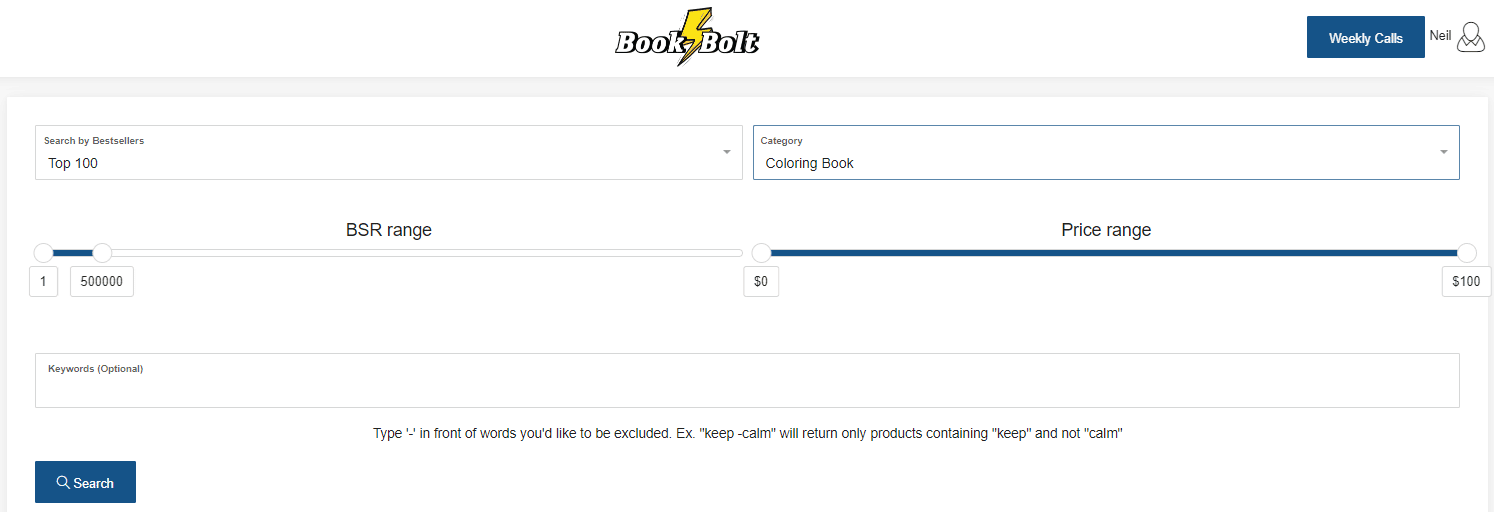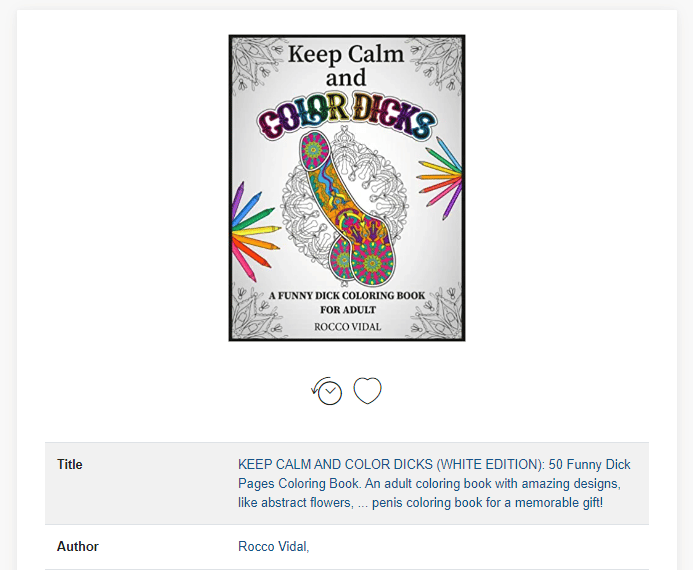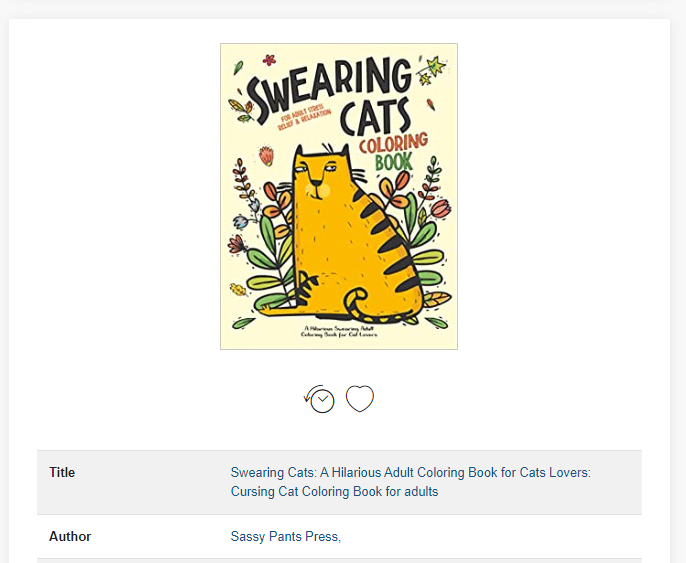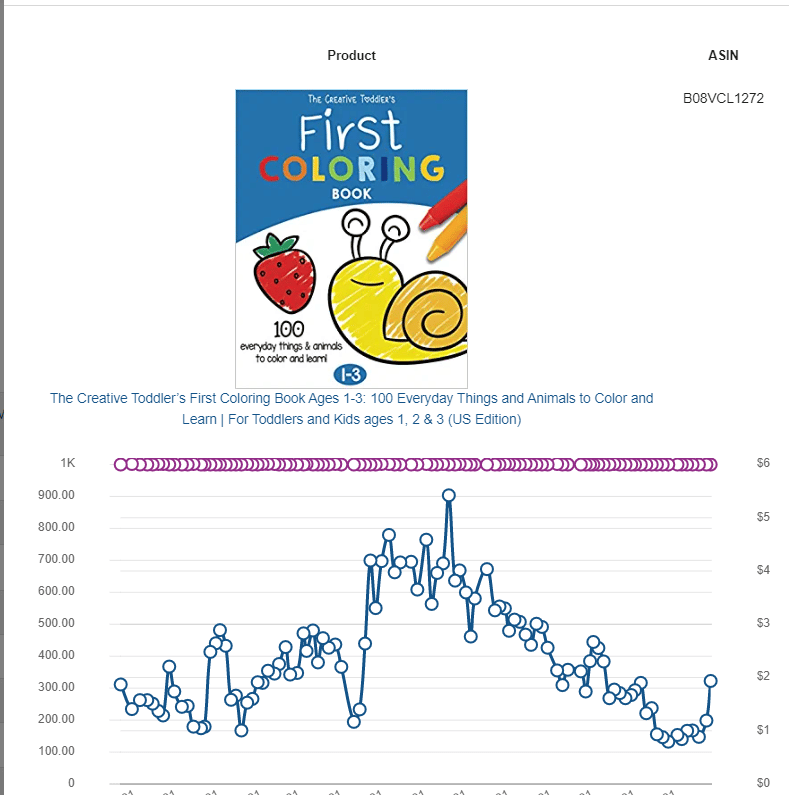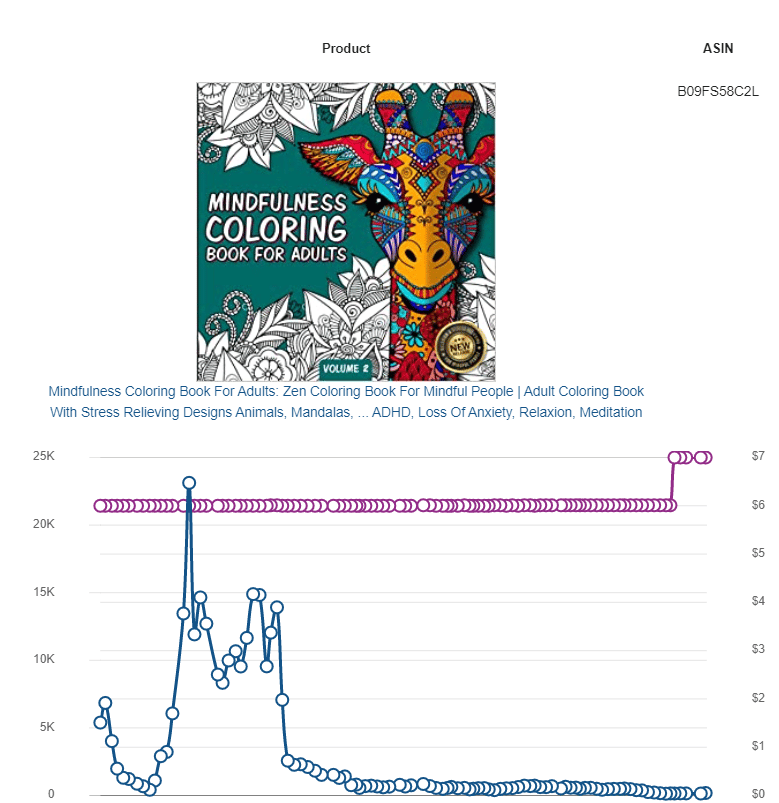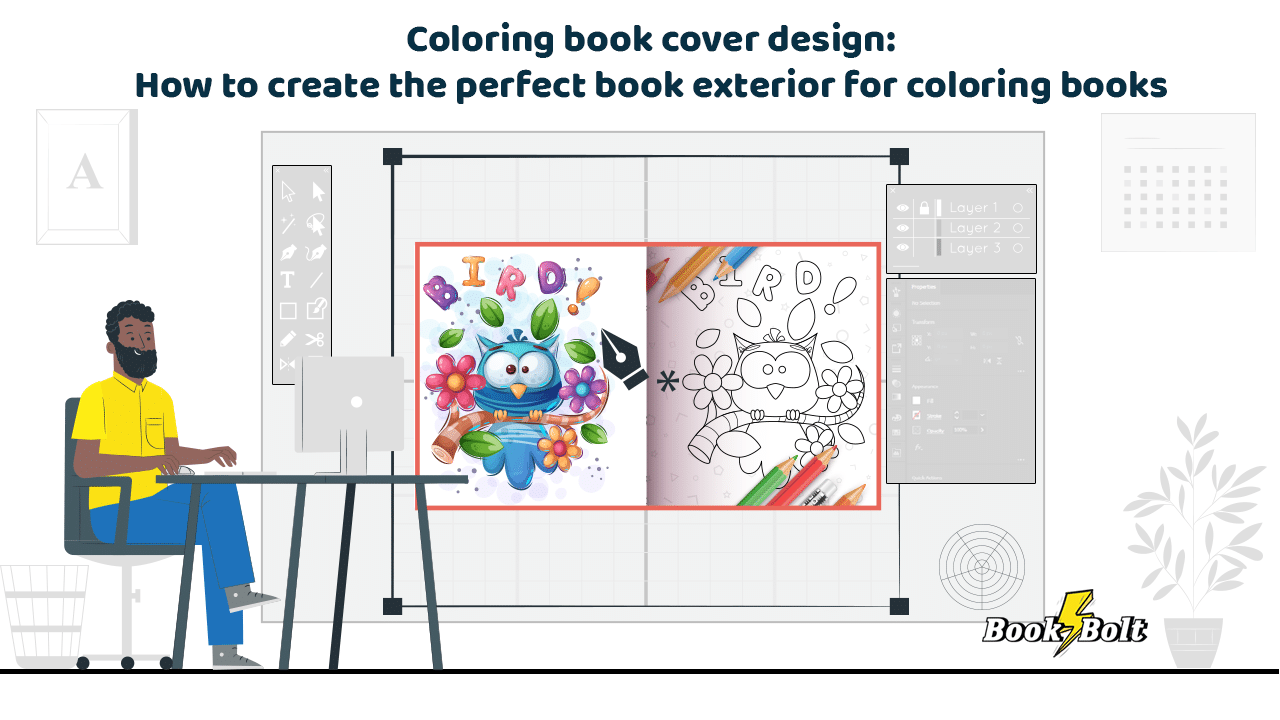
Originally the domain of children, the popularity of coloring books has extended to multiple age groups over the years. And with the festive season approaching, they make for great gifts for young and old alike.
If you’re looking to sell coloring books on Amazon KDP, your cover design is one of the very first factors your audience will examine before they decide to buy.
So, what are some of the practices used by bestsellers to create effective covers for coloring books and which ones can you emulate?
We take a closer look below.
Best practices extracted from bestsellers
In order to discover, study, and analyze the most successful coloring book covers on Amazon KDP, we headed over to Book Bolt and utilized its Cloud module to pull up the top 100 coloring book bestsellers.
This was done by choosing the “coloring book” category and selecting the parameters in terms of best-sellers rank (BSR) and price.
Our observations revealed that the bestsellers in this category have done exceptionally well in terms of the following criteria.
Audience
The top 100 bestsellers have clearly identified their audiences. This means that they’ve segmented children’s coloring books into different age groups that are suitable for the given child’s developmental needs. Other segments that we discovered are coloring books targeted at teens, as well as coloring books for adults.
Each of the bestsellers that we identified has accurately targeted their coloring book product by ensuring that they specify who the book is for in their titles and descriptions. This not only makes it easier for buyers to search for, but the clear segmentation is also an important way of reaching a more niche audience.
Niche
We also discovered multiple sub-niches. These sub-niches are a great way of partitioning the vast audience for coloring books in general. As such, we find coloring books for toddlers that are aged one to three (or older) as well as coloring books for adults. Regarding the latter, we find a mixture of both naughty covers as well as those that indicate that their books are aimed at stimulating mindfulness and reducing stress.
However, there are also coloring books aimed at teenage girls, animal lovers, flower admirers, and more.
Background
What also emerges from our research is the different solid-color backgrounds that sellers have opted to use when targeting their unique audiences.
For example, coloring books aimed at very young children or toddlers most often have white backgrounds, whereas those aimed at adults have a black or very dark colored background.
Design hierarchy
The term “design hierarchy” refers to the ordering and presentation of design elements, so as not to overwhelm the eye. It presents different elements in a particular order through sizing these elements appropriately.
We noticed that the top sellers in this category (for both children and adults) display their titles in a large font size, followed by a subtitle in smaller text. The main image is usually of a large nature.
All of this creates visual harmony and does not overwhelm the audience at first glance.
Colors
The bestsellers also used appropriate coloring in their actual designs and not just in their backgrounds. For instance, coloring books for toddlers mainly use primary colors (red, yellow, blue, and green) to display large-sized, simple shapes such as strawberries, snails, suns, trains, and other child-related images.
Regarding adults, we noticed that there is a much higher level of complexity in the designs and colors used. In addition, the coloring books aimed at adults provide both a black and white preview in the background of uncolored patterns, as well as already filled-in patterns with a final outcome.
Fonts
Fonts also play a crucial role in the cover design process. There are significant differences between coloring books for children and those aimed at adults.
For instance, toddlers’ coloring books mainly use large, block fonts with simple words. Meanwhile, books targeted at adults use either a cursive font (which signals that the product is aimed at women) or fonts that are written in uppercase with block letters.
Tips for creating a cover design for coloring books
Here’s a quick summary of the actions you should take when creating a cover design for coloring books.
Identify and cater to your target audience
You’ll need to be clear about exactly who you are targeting. Children and adults’ needs vary considerably. Also, the purpose of coloring books is different for these two audiences.
Whereas children’s coloring books are aimed at teaching children about shapes, colors, and objects, adults’ coloring books are primarily aimed at helping reduce stress, improve focus, and remain mindful. These drastically different experiences must be kept in mind from the outset of creating your design.
Distinguish between the complexity of coloring objects
It’s also worth distinguishing between the complexity of the objects that you’ll place on your cover and how these will be arranged.
The objects on the cover of a children’s coloring book are medium in size, brightly colored, and simple, geometric ones.
Adults’ coloring books see much more complexity in terms of the actual design, the depth and variety of colors used, and the font.
White background for children, darker background for adults
The background is another crucial element to consider. Children’s coloring books in most cases have a pure white background. This is so as not to overwhelm them.
However, adult coloring books are usually created with a black or a dark-colored background, implying a more serious final product that appeals to this audience.
Large, simple font for children, cursive fonts for adults
Furthermore, the text and font you use should be carefully curated to match your audience. Large, simple, bold, and colorful fonts are more well-suited to children.
Adults, on the other hand, can handle more complexity and cursive fonts are often used by some of the bestsellers in the top 100.
Round, simple objects for children, intricate, raunchy objects for adults
As for the actual design elements on the cover, adult coloring books either have a more serious nature to them (such as animal designs) or a fun nature (with designs that enable users to color in phallic objects).
Children’s coloring books employ simple round shapes that do not require much focus and precision, owing to the target audience’s still-developing motor functions.
Examples of bestselling coloring books to emulate
Going back to Book Bolt’s Cloud module, we were able to pinpoint the two bestsellers in the coloring book category. They have performed exceptionally well by following the best practices mentioned above.
We identified the bestseller in the adult category and in the toddlers category.
Here they are:
Toddlers
The bestseller in the toddlers category is Imagi Press. Their book is titled “The Creative Toddler’s First Coloring Book Ages 1-3: 100 Everyday Things and Animals to Color and Learn | For Toddlers and Kids ages 1, 2 & 3 (US Edition)”. To date, they’ve generated 4,431 ratings and they have an incredibly low BSR of only 131.
Selling at $5.99, their estimated monthly sales are a whopping 800. With their catchy design that follows the best practices mentioned above, this seller is certainly raking in a nice amount of royalties.
Adults
As for adults, we have the seller YOURnotes Whimsical Relaxing Coloring Books. Their coloring book is titled “Mindfulness Coloring Book For Adults: Zen Coloring Book For Mindful People | Adult Coloring Book With Stress Relieving Designs Animals, Mandalas, … ADHD, Loss Of Anxiety, Relaxion, Meditation”. Although they’ve generated fewer ratings than the toddler coloring book seller mentioned above (1,413), they are also doing exceptionally well with a BSR of 96 and 885 monthly sales at a price of $6.00.
And that’s a wrap
The coloring book category on Amazon KDP is highly lucrative with a potential to earn you hundreds of sales. That is if you approach the cover design process using the bestselling practices of current top-performers. Of course, you can always try to navigate the massive Amazon marketplace and gather data in a piecemeal fashion.
However, why waste valuable time and resources when you have Book Bolt at your fingertips?
